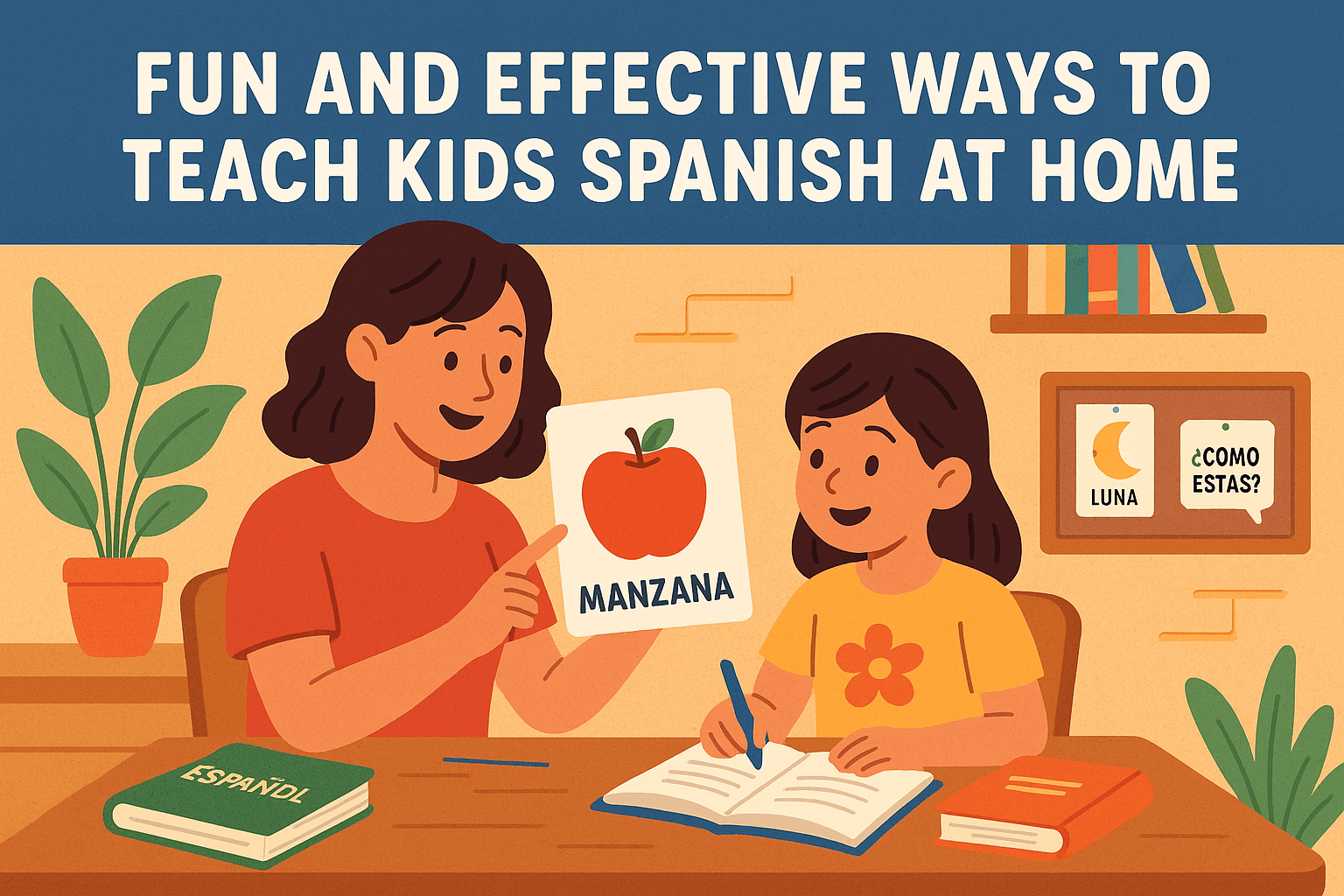Raising bilingual kids has become a top priority for many parents—and for good reason. Spanish is the second-most spoken language in the world by native speakers. Learning it early not only boosts communication skills but also improves cognitive function and cultural awareness.
If you want to help your child learn Spanish at home, the good news is you don’t need to be fluent yourself. With creativity and consistency, you can build a language-rich environment right in your living room.
Use Stories and Songs to Build Vocabulary
Young learners absorb language best through repetition and rhythm. Spanish-language storybooks, audiobooks, and songs make learning feel like play.
Popular choices include:
- Storybooks like La Oruga Muy Hambrienta (The Very Hungry Caterpillar)
- Songs such as Los Colores or La Familia
- Audiobooks from platforms like Audible or Spotify
These tools introduce new vocabulary in context, helping kids remember words naturally.
Gamify the Learning Experience
Kids love games—and when learning is fun, they’re more likely to stick with it. Use flashcards, matching games, or apps that turn Spanish practice into a challenge.
Try:
- Memory matching games with Spanish/English words
- Bingo cards featuring colors, animals, or foods in Spanish
- Digital tools like Duolingo Kids or Gus on the Go
Make it a family game night challenge. Bonus points if you use real-life objects around the house.
Introduce Spanish into Everyday Routines
Practice doesn’t need to be a formal session. In fact, one of the most effective methods is sprinkling Spanish into daily life.
Examples include:
- Saying the days of the week in Spanish at breakfast
- Labeling common household items with sticky notes (el refrigerador, la mesa, etc.)
- Counting steps, toys, or snacks together en español
This real-world repetition reinforces vocabulary naturally.
Bring in Outside Help
Sometimes, outside structure helps move things along. Consider bringing in an online tutor who specializes in Spanish for kids. Sessions can be tailored to your child’s level, keeping them engaged while you get expert guidance.
Create a Spanish-Focused Environment
Even small tweaks in your home can support language learning. Set up a corner with Spanish-language books, puzzles, and toys. Or play background music and Spanish-language cartoons during free time.
Here are a few simple swaps:
- Use a Spanish calendar to track days and months
- Change device language settings to Spanish (with supervision)
- Stream Spanish-language cartoons like Pocoyó or Dora la Exploradora
The more exposure they get, the more natural it feels.
Build Cultural Connections
Language and culture go hand-in-hand. Celebrate Hispanic holidays or cook recipes from Spanish-speaking countries to give meaning to the language.
Fun ways to integrate culture:
- Try cooking simple recipes like arepas, paella, or churros
- Learn a few traditional dances or folk songs
- Watch kid-friendly documentaries about life in Latin America or Spain
This reinforces learning and encourages curiosity.
One Step at a Time
It’s important to be patient. Your child might not speak Spanish fluently right away, but consistent exposure matters more than perfection. Celebrate small wins, whether it’s identifying five fruits in Spanish or singing a whole verse of a song.
Stat That Matters
According to the Pew Research Center, nearly 85% of parents say it’s important for their child to learn another language besides English, with Spanish being the most desired second language.
So you’re not alone—many families are finding ways to bring Spanish into their homes. With the right mix of play, practice, and support, your child can build skills that will benefit them for a lifetime.

Chase Ortiz is part of the team at PaigeSimple, where he takes care of all the advertising requests. With a sharp eye for detail, Chase makes sure every advertising opportunity is handled smoothly, helping the site grow and reach more people. His ability to manage these tasks efficiently makes him an important part of the team.

